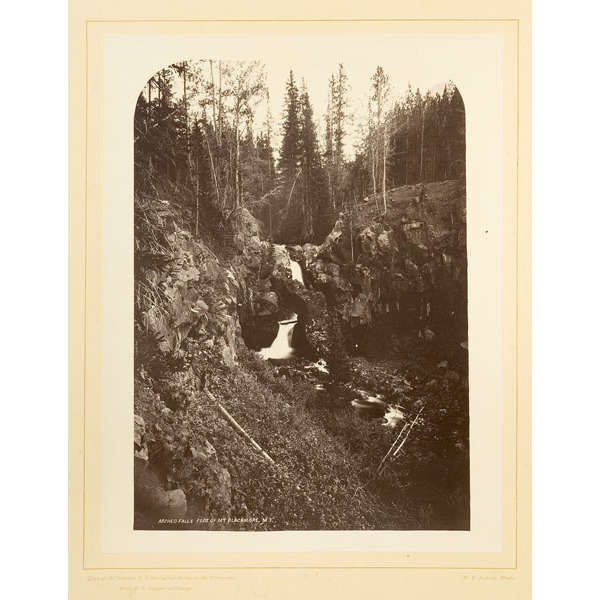24.5" x 34.5", in period frame, 27.75" x 38", signed in type along lower margin Originally designed by John Binns. Ornamental part drawn by Geo. Bridport of the United States and the Thirteen States, drawn from official Documents by Thos. Sully. Portrait of Genl. Washington painted in 1795 by Stuart. Portrait of Thomas Jefferson Painted in 1816 by Otis. Portrait of John Hancock Painted in 1765 by Copley. Ornamental parts, Arms of the United States and Thirteen States engraved by Geo. Murrey. Thos. writing designed and engraved by C.H. Parker. Portraits engraved by L.E. Longacre. Printed by James Porter. By the early 19th century, the generation after the one which had fought for independence was maturing, and, having been born after the war, many had never seen the text of the Declaration. America had also just fought the "Second Revolution" (War of 1812). The perception of the Declaration was changing, from an instrument declaring separation from Britain, to a symbol of American nationalism. A number of engravers and printers began preparing their interpretations of the document. In particular, the versions published by Benjamin Tyler, who employed script text and accurate facsimiles of the signatures, and John Binns, who produced this ornamental version which embodied other symbols of nationalism along with the Declaration. Tyler cut his price when Binns announced his intent to publish this broadside, so in response, Binns sought government recognition. He added to the bottom of his masterpiece: Department of State, 19th, April 1819. I certify, that this is a Correct copy of the original Declaration of Independence, deposited at this Department; and that I have compared all the signatures of the original, and found them Exact Imitations along with a facsimile of John Quincy Adams' signature. Shortly after this, however, Adams commissioned William J. Stone to produce an exact copy, to serve as the official government instrument, thus leaving Binns "high and dry." Most copies of the Declaration seen today are derived from the Stone engraving, and the Binns and Tyler versions are relatively difficult to obtain. Bidwell 3. Condition: Laid on board, toned with scattered mold damage, a couple of short tears along bottom margin, G++.
24.5" x 34.5", in period frame, 27.75" x 38", signed in type along lower margin Originally designed by John Binns. Ornamental part drawn by Geo. Bridport of the United States and the Thirteen States, drawn from official Documents by Thos. Sully. Portrait of Genl. Washington painted in 1795 by Stuart. Portrait of Thomas Jefferson Painted in 1816 by Otis. Portrait of John Hancock Painted in 1765 by Copley. Ornamental parts, Arms of the United States and Thirteen States engraved by Geo. Murrey. Thos. writing designed and engraved by C.H. Parker. Portraits engraved by L.E. Longacre. Printed by James Porter. By the early 19th century, the generation after the one which had fought for independence was maturing, and, having been born after the war, many had never seen the text of the Declaration. America had also just fought the "Second Revolution" (War of 1812). The perception of the Declaration was changing, from an instrument declaring separation from Britain, to a symbol of American nationalism. A number of engravers and printers began preparing their interpretations of the document. In particular, the versions published by Benjamin Tyler, who employed script text and accurate facsimiles of the signatures, and John Binns, who produced this ornamental version which embodied other symbols of nationalism along with the Declaration. Tyler cut his price when Binns announced his intent to publish this broadside, so in response, Binns sought government recognition. He added to the bottom of his masterpiece: Department of State, 19th, April 1819. I certify, that this is a Correct copy of the original Declaration of Independence, deposited at this Department; and that I have compared all the signatures of the original, and found them Exact Imitations along with a facsimile of John Quincy Adams' signature. Shortly after this, however, Adams commissioned William J. Stone to produce an exact copy, to serve as the official government instrument, thus leaving Binns "high and dry." Most copies of the Declaration seen today are derived from the Stone engraving, and the Binns and Tyler versions are relatively difficult to obtain. Bidwell 3. Condition: Laid on board, toned with scattered mold damage, a couple of short tears along bottom margin, G++.















Testen Sie LotSearch und seine Premium-Features 7 Tage - ohne Kosten!
Lassen Sie sich automatisch über neue Objekte in kommenden Auktionen benachrichtigen.
Suchauftrag anlegen